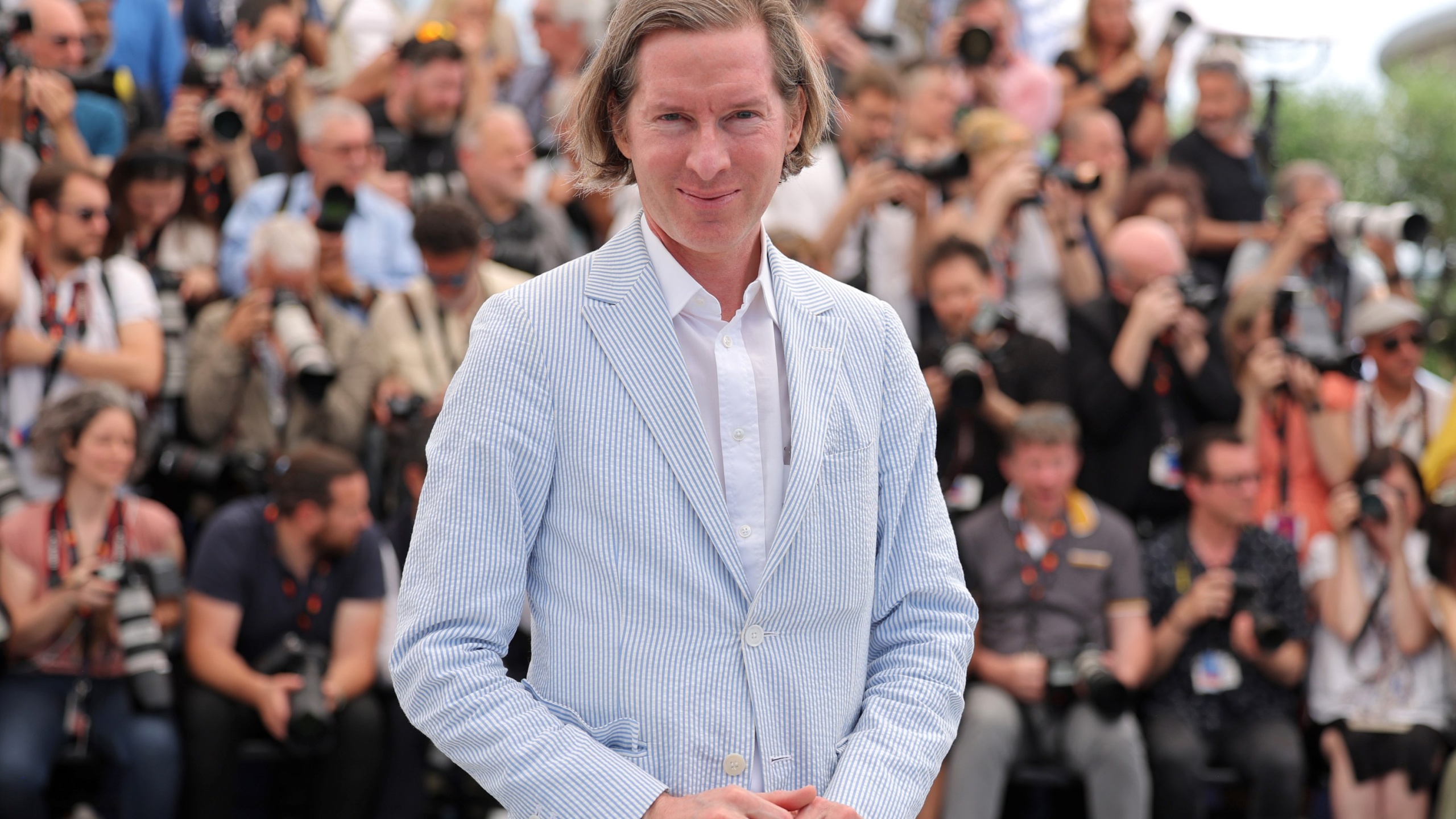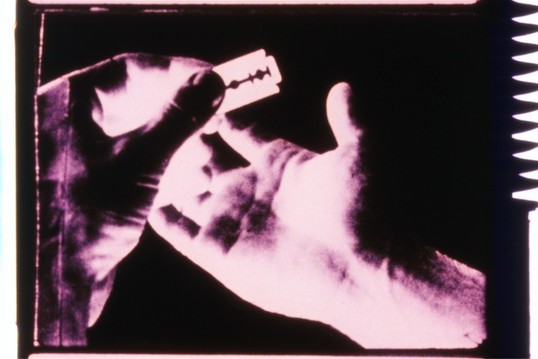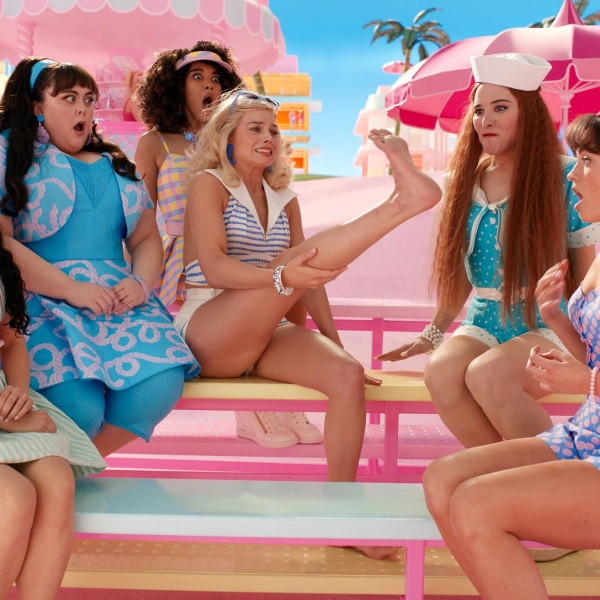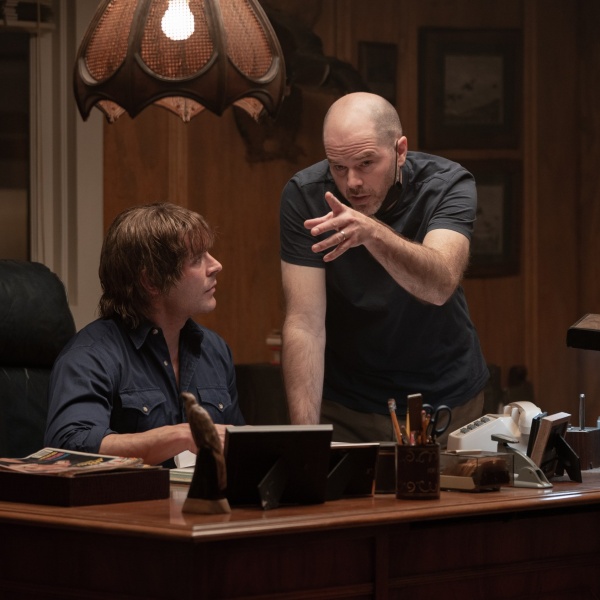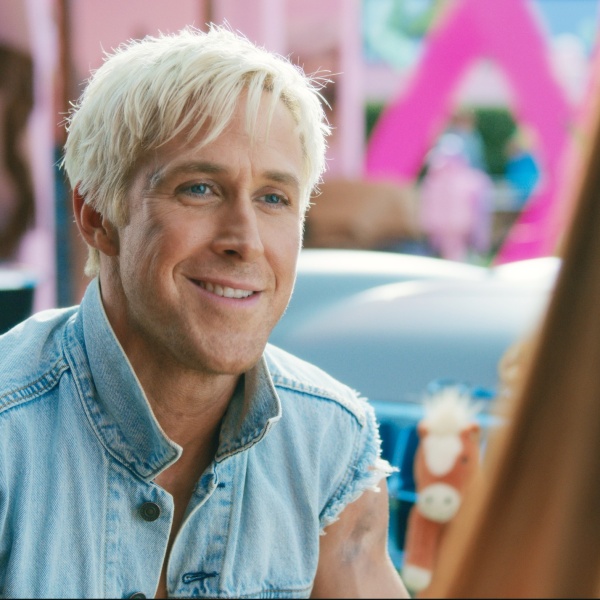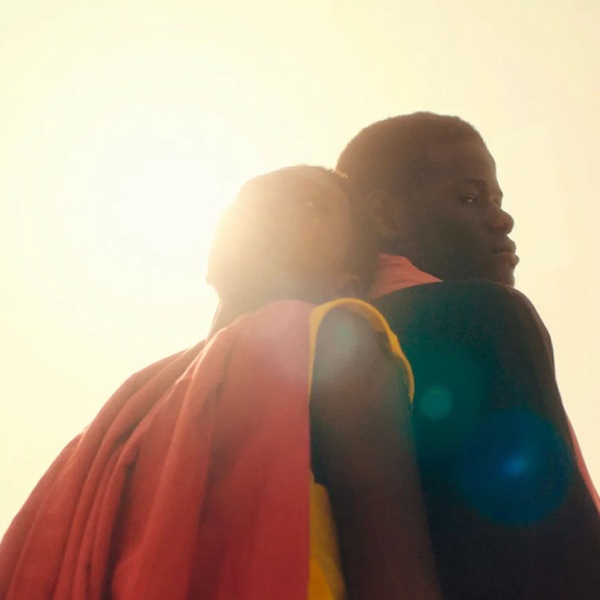Wes Anderson has explored many distinctive milieus over the years, from the fictional Zubrowska of “The Grand Budapest Hotel” to the bottom of the sea in “The Life Aquatic with Steve Zissou” and “Isle of Dogs.” However, “Asteroid City” may be Anderson’s most personal backdrop yet, as its chief subject is storytelling itself.
A playful meta narrative that defies simple categorization, “Asteroid City” functions as three movies in one: It’s the colorful story of a Junior Stargazers convention in a midwestern desert town circa 1955, but it’s also a 1950s TV play called “Asteroid City,” and on top of that, a behind-the-scenes look at a troubled playwright (Edward Norton) working on the aforementioned play. There’s an alien played by Jeff Goldblum, but also Jeff Goldblum playing an alien. Got all that?
In addition to being a movie about acting, “Asteroid City” is an acting showcase. Anderson regular Jason Schwartzman plays a grieving parent, while Anderson newbie Tom Hanks plays the grieving father-in-law; Scarlett Johansson plays a glamorous movie star; Bryan Cranston narrates the TV show; other familiar faces include Adrien Brody, Jeffrey Wright, and Steve Carell (who, as Anderson told IndieWire this week, stepped in last minute to replace Bill Murray).
With its shifting narrative trajectory, “Asteroid City” coheres into a fascinating meditation on the history of American storytelling, with references that stretch from the “Playhouse 90” era and the Actors’ Studio to “Close Encounters of the Third Kind.” It’s a unique creative stew for a filmmaker best known for developing his own homegrown style. While his quirky and immaculate aesthetic has been imitated with A.I. trailers galore (which he claims he doesn’t watch), the filmmaker remains an unpredictable storyteller well into the fourth decade of his career. At Cannes, the movie baffled some critics, but IndieWire’s David Ehrlich called it one of Anderson’s best — and it could make its way into the awards conversation later this year.
All of that remains to be seen, but for now, Anderson is in good spirits. The director traveled from his main hub in Europe to New York on Sunday and quickly made his way to his usual hangout, Bar Pitti, to see friends. Then he hopped on the phone with IndieWire ahead of the U.S. premiere to unpack the many themes and inspirations behind his new work. He also explained the journey of his upcoming Netflix short film, “The Wonderful Story of Henry Sugar,” and shared his thoughts on the evolving careers of his favorite directors.
The following interview has been condensed and edited for clarity.
IndieWire:You often set your movies in the past, but this is the first time you’ve explored 1950s America and it’s clear you have a strong fascination with the film and theater work from that time. Since you were born in 1969, you weren’t alive for that era, so how did you develop such a strong relationship to it?
Wes Anderson: When Owen Wilson and I were 18 or so, we were together everyday, we wanted to do the same thing and we knew we wanted to do it together. We had our college courses we were taking, but our real education was the one we were giving ourselves, which had a lot to do with movies. The thing at the center of it for us — if you kind of break it down — is Elia Kazan. We were so interested in Marlon Brando, James Dean, Montgomery Clift, and the world of these new voices in the movies of the ‘50s. It was so resonant. When I think about it now, how odd it is that while we loved the movies of the ’70s — we had all our guys from that period — the ’50s was really at the center of it for us. As much as it was about Kazan, it was also about the repercussions of Marlon Brando walking onto the stage.
How do you see the interplay of Brando and other actors bringing their talent from theater to film?
I have always been very susceptible to the mystique of a backstage story and the theater, just the aura of it. The ’50s New York stage is its own special thing, but there was this new kind of acting, this new variety of storytelling that Kazan and these playwrights of the period were a part of. In a way it was the most cinematic ever. Its effect is bigger on the movies than even on the stage. That’s where some part of this movie starts to come from for us and why it came to exist.
Of course, that doesn’t address the way you position the American West here. It has an almost exotic quality.

It has to do with a kind of Euro take on the American west. I thought a lot about Wim Wenders. I’ve always loved his interpretation of the landscape and the people in it. American stuff fascinates him from a sort of Berlin point of view. It comes back in a way that makes it fresh for me. He took a lot of still photographs out in California, Nevada, Arizona, places like that. In our earlier days, Owen and I loved Sam Shepard. He’s from California but his take on the West is filtered through an avant garde perspective. He goes to New York before he starts to tell these stories. His New York is Patti Smith and Lou Reed. It’s a downtown rocker New York. I think that’s also a kind of Euro thing. And then he ends up in collaboration with Wim Wenders on “Paris, Texas.”
“Paris, Texas” certainly makes sense as a visual reference point for “Asteroid City,” but it also has a larger, almost hyperbolic sense of scale.
There’s a different kind of cinema that comes from the ‘50s besides the Kazan approach, which is big-picture Cinemascope. Suddenly there are these widescreen things that take up the whole landscape, these wide formats they invented to make movies bigger. I’m drawn to that, too.
You mentioned Marlon Brando earlier, but Marilyn Monroe is also relevant to “Asteroid City” as Scarlett Johansson’s character is clearly modeled on her. What is your relationship to her work?
I can’t say that Marilyn Monroe has been a special fixation for me, especially knowing the struggle it sometimes was to get through the experience of making a movie with her. I love her in “Some Like It Hot” and “The Prince and the Showgirl.” Billy Wilder made two movies with her and he knew there was just no other way to get Marilyn Monroe than to go through the whole thing, to have Paula Strasberg telling her what to do behind his back. She’s this most vulnerable kind of talent where there’s something real happening in front of the camera. She’s a movie actress who goes back the other way. I don’t know that she ever played on the New York stage, but she went into the Actors Studio and tried to dig deep in that way.
Did you see “Blonde”?
No, but I know Adrian plays Arthur Miller in it. Is it good?
It’s troubling, because it seems to have a hard time appreciating the good in her work because of what she endured.
You know, in the end, there’s always this kind of thing around mental health. No matter how much talent somebody has, in the end, they’re still subject to however the brain works and god knows, brain trauma can come in so many forms. It’s one thing to play a scene. In a way, being an actor is pretty straightforward. But it’s an unbelievably difficult thing to find your way to being magical, to aspire to something, and find your way to it. There’s just no recipe. It’s a mixture of things you have to discover.
Actors don’t always want to go along with a specific vision. “Asteroid City” seems to take that into account. Does it frustrate you when your cast doesn’t quite get what you’re going for?
There’s nothing I love more, even when it makes the process more challenging and tumultuous, than having somebody who just wants to throw themselves completely into the thing and believes in it. The whole thing with this movie is about having spent some time with actors and experiencing what an emotional ride they go on and what it means to me to be with them.
It also seems to be a meditation on stardom, so it’s notable that you’re working with Tom Hanks for the first time. What was it like to get him onboard?

By the time I had the chance to work with Tom Hanks on this movie, he had crossed a sort of threshold into being more iconic. He’s a full-on icon now. If I’d worked with him in 1998 or something, he would’ve been a big movie star, but not a legend. He expanded over those years. I’d met him very briefly a couple of times over the years and I had his email address. When I was working on this movie, I thought he’d be perfect for this because he’s interested in the 20th century history of America. We’ve seen him pursue this era in his work. It was pretty simple: I wrote him, said I had this, and asked him to read it. He wrote me back and said, “When are the dates?” He’s the kind of person where he’s going to make everything work better and more smoothly. He’s going to do things to help you make the movie. Then also Rita his wife came with him and she’s in the movie. Their enthusiasm helps make everything better. And on top of that, they have a son who works on our movies too now, and stayed on with us after “Asteroid City.”
What’s real in this movie? You have actors playing people in a story but they’re also playing actors rehearsing that story…
Those characters are the actors who they’re playing, but for me, I still feel like they’re the characters the actors play. They mix together for me. The black-and-white and the color parts, somehow I feel they’re one person. The alien is Jeff Goldblum in his costume but I feel like he’s also this uncontrollable thing beyond our understanding that’s entered into the mix.
The most spectacular scene in the movie — and maybe all of your work — comes when the whole cast begins to chant “You can’t wake up if you don’t fall asleep.” Where did that line come from?
The scene itself comes out of this acting class where they’re doing exercises. Sometimes what you’re doing in an acting class is quite abstract because you’re taking it out of character and instead you’re going into something to “test your instrument,” to train yourself to do something that a text will require of you, but you don’t know what that text is. They’re inventing a kind of acting exercise but they’re also meant to be trying to help this playwright break through a sort of block he’s got in his script. He has something he’s envisioning and he’s not sure what it is, so he’s looking to this company to workshop it with him. Then this thing kind of bursts out of them.
But there’s a bigger idea embedded in that line.
That was sort of the context of this scene, but what actually happens in it is still something that happens spontaneously between you and a pencil or a typewriter. You’re waiting for the thing that is also beyond your control to suddenly happen. I will say there’s a theatrical kind of reference to it but I’m hesitant to say it. At some later date, I’ll say it. It’s something that has been adapted. It’ll be more interesting at a later date. Actually when I do tell you, then you’ll see it, and it’ll be interesting. Better to let it simmer for now.
Earlier you mentioned how ’70s American cinema inspired you. Many of the filmmakers you’ve cited as your favorites from that period are still working today. What do you make of their evolution as you consider your own evolving body of work?

People are sort of obligated to compete with themselves and everything they do is compared to their earlier work. There’s a certain view that people do their best work as movie directors in their 30s or 40s and 50s, not really their 60s or 70s. They don’t say that about conductors. But with this group, there has been a lot of especially good work from them in their 70s. Martin Scorsese is over 80 and he’s got a big movie coming out. I haven’t seen “Killers of the Flower Moon,” and I wouldn’t say that “Wolf of Wall Street” has the kind of blast of originality and inspiration that gives us “Goodfellas,” but it used all these kind of tools and techniques that he sort of invented. He was working with actors in a way he hadn’t in years, in an improvisational way that he’s so great at it. He made this great, huge movie that’s endlessly entertaining.
Now we see Paul Schrader with a whole set of later movies that are sort of Bressonian, where he’s taken a sort of focus and taken back something for himself. Spielberg’s collaborations with Tony Kushner have produced such interesting work and it’s all later period stuff. Even Frances Coppola who hasn’t made a movie in some time is now making something gigantic. He’s taking on a tremendously personal project he’s been wanting to do all these years. It’s a twist on the whole that’s been interesting and surprising. But I’d say each one has a different kind of virtuosity that’s totally unique to them.
Brian De Palma has given you a lot of guidance over the years. How much has he inspired the way you approach filmmaking?
You could always say that De Palma follows Hitchcock’s path, but a lot of people have followed De Palma’s path. His point of departure from Hitchcock’s influence is so strong. I have tried to do bits like a De Palma scene, setting up a sequence like De Palma would, but it’s almost impossible for me to do. Tarantino and Paul Thomas Anderson have done scenes where they set things up like De Palma and do it well. Not me. I had to find other things in his work. There are certain things he does that I certainly steal but others that I can’t steal, because I’m not capable of it.
What relationship do you have to the WGA strike going on right now?
I don’t have a writers room. It has a completely different context from the way I work. I’m not involved with that. I’ve never worked in a writers room. It’s been so long since I lived in Los Angeles. It’s a bit of a world apart from the area where I work.
But it could get in the way of your ability to work.
I’m not writing. If I was writing something, it wouldn’t be business as usual because I’d be on strike.
You have a project you’re hoping to shoot this fall, right?
But that’s already written. If I was in the middle of that script, I’d say I wish I could finish writing my script, but that’s not the case. You know, I hope everybody gets what they want and the deals are made to people’s satisfaction.
You’re a real theatrical purist, but you have a new project coming up with Netflix, an adaptation of “The Wonderful Story of Henry Sugar.” Are you concerned that it might not get the kind of big-screen life you prefer?
In my case it’s a little bit of a weird thing. I knew Roald Dahl since before we made “Fantastic Mr. Fox.” I met Lindsay Dahl, his widow, when we were shooting “The Royal Tenenbaums” like 20 years ago. For years I wanted to do “Henry Sugar.” They set this story aside for me because I was friends with them. Lindsay kind of handed the torch to Luke, Dahl’s grandson. So I had this waiting for me. But I really couldn’t figure out the approach. I knew what I liked in the story was the writing of it, Dahl’s words. I couldn’t find the answer, and then suddenly I did. It’s not a feature film. It’s like 37 minutes or something. But by the time I was ready to do it, the Dahl family no longer had the rights at all. They had sold the whole deal to Netflix.
Suddenly, in essence, there was nowhere else you could do it since they own it. But beyond it, because it’s a 37-minute movie, it was the perfect place to do it because it’s not really a movie. You know they used to do these BBC things called “Play for Today” directed by people like Steven Frears and John Schlesinger and Alan Clarke. They were one hour programs or even less. I kind of envisioned something like that.
So this is more akin to the short film “Hotel Chevalier” you made for Apple in 2007.
Yes. It’s not quite the choice between a full-fledged cinema release and a streaming release because you would never distribute a short film like that and distribute it in cinemas. They’d have to sell cheaper tickets or do a double feature. I will say is that while I had only a good experience with Netflix, but I’m very happy to be putting “Asteroid City” in cinemas. Focus and Universal are doing it the real cinema way. That’s the way I really want my movies to be shown.
You moved to Europe over 15 years ago and divide your time between England and France. How does living outside the U.S. impact you as a filmmaker?
What I love is that my experience of the world is broader than it was. I didn’t grow up in Los Angeles or New York. I grew up in Houston. It was a more narrow perspective. Aside from knowing now what it’s like to live somewhere else, the experience of being a foreigner teaches you all kind of things, some you can’t really describe. But also, as I’ve worked in various places all over the world, I’ve gathered collaborators as I’ve gone along. I have people I’ve met in all corners of the world, really, who have stayed with me. They all bring things from their places that we use as a group. I’ve really loved having a bigger experience than anything that my parents had.
